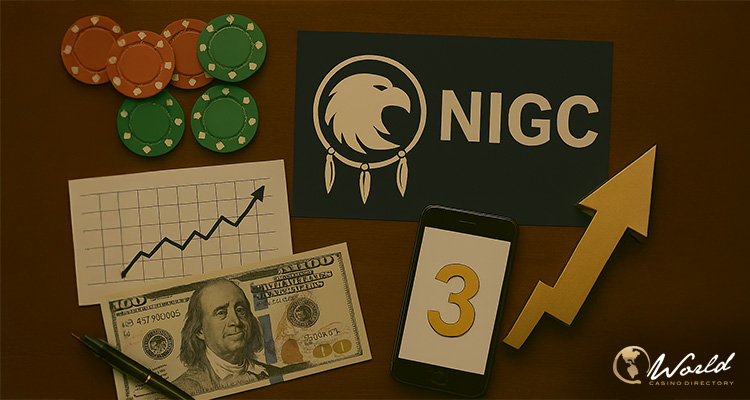The National Indian Gaming Commission (NIGC) has reported a historic gross gaming revenue (GGR) of $43.9 billion for the fiscal year 2024, marking a $2 billion increase from the previous year. This record-breaking performance represents a 4.6% overall growth across the tribal gaming industry.
Record-Breaking Year for Tribal Gaming Revenues
“This year’s GGR reflects not only the resilience of the tribal gaming industry, but also the dedication of tribal leadership in preserving and growing this important economic driver for their communities,” said Sharon Avery, NIGC Acting Chairwoman. Avery added that the ongoing success of Indian gaming is a testament to strong tribal governance and the sound regulations that help maintain the integrity of the industry.
The GGR figure is calculated from independently audited financial statements submitted by 532 gaming operations, owned by 243 federally recognized tribes across 29 states. The results from two NIGC regions, Oklahoma City and Washington, D.C., saw particularly impressive growth, with both regions posting double-digit increases compared to the previous fiscal year.
The growth in tribal gaming revenue demonstrates its positive economic impact, especially in areas like job creation, infrastructure development, and the funding of critical social services. As NIGC reports, Vice Chair Jeannie Hovland commented, “These revenue numbers demonstrate the positive impacts of tribal gaming and the essential role it plays supporting tribal sovereignty, job growth, infrastructure, education, and important social, health, and welfare programs in tribal communities.”
The NIGC’s GGR data (pdf) is a vital tool for evaluating trends in the industry and helps guide regulatory policies that support the Indian Gaming Regulatory Act (IGRA). The revenue is calculated by subtracting winnings returned to players from the total amount wagered at gaming establishments.
Key Regional Highlights in 2024 GGR
Tribal gaming has seen substantial growth across the U.S., with all eight NIGC regions reporting positive figures. The Oklahoma City region, which includes major tribal casinos in Oklahoma, recorded an increase of 12.7%, generating $3.6 billion in GGR. This was one of the highest growth figures across all regions.
The Washington, D.C. region, home to the Seminole Tribe’s Hard Rock properties in Florida, also had a strong year. It reported $10.2 billion in GGR, an 11.2% increase over the previous year. Other states within this region include Alabama, Connecticut, Louisiana, Mississippi, New York, and North Carolina, all contributing to this growth.
In California, where all 87 casinos are operated by tribes, GGR reached $12.1 billion. Although this represents only a 1.4% growth from 2023, it highlights the ongoing importance of California’s tribal gaming market, which continues to lead in revenue generation.
While the growth is encouraging, it is also clear that tribal casinos are not immune to challenges. For instance, the revenue growth in California was modest, reflecting the competitive pressures and high regulatory costs in the state. Additionally, the ongoing efforts to introduce online gaming and sports betting across various states will continue to shape the landscape for tribal gaming.
Despite these challenges, the future looks promising for Indian gaming. The industry’s adaptability and innovation have been key to its continued success, allowing it to meet new challenges and capitalize on emerging opportunities, such as expanding sports betting and iGaming platforms in certain states.
Tribal governments across the U.S. remain committed to expanding their economic footprint, investing in sustainable development, and providing their communities with jobs and essential services. The strong tribal leadership, paired with sound regulatory practices, positions the Indian gaming industry for long-term success.


